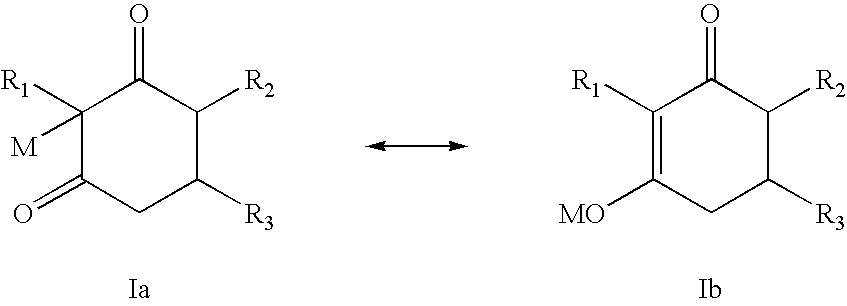Recording sheets for ink jet printing
a technology of recording sheets and ink jet printing, applied in the field of recording sheets, can solve the problems of not meeting all the required requirements, not sufficiently increasing the stability of printed images on recording sheets, and the images are not particularly stable, etc., to achieve the effect of improving the storage stability of printed images
- Summary
- Abstract
- Description
- Claims
- Application Information
AI Technical Summary
Benefits of technology
Problems solved by technology
Method used
Image
Examples
example 1
Coating Solution
38.0 g of aluminium oxide / hydroxide of formula AlOOH, prepared in the absence of acid according to the method of example 1 of patent application DE 3'823'895, were dispersed under vigorous mechanical stirring at a temperature of 40° C. in 104 g of aqueous lactic acid (1.7%). Vigorous mechanical stirring was continued for a further 2 hours. Afterwards, 11.4 g of a solution of polyvinyl alcohol with a hydrolysis degree of 88% (10%, molecular weight 72'000, available as Moviol 2688 from Clariant AG, Muttenz, Switzerland) and 25.4 g of a solution of polyvinyl alcohol with a hydrolysis degree of 98% (9%, molecular weight 195'000, available as Moviol 5698 from Clariant AG, Muttenz, Switzerland) were added. The total weight of the coating solution was adjusted to 200 g with deionized water and the solution was exposed to ultrasound for 30 seconds.
140 g / m2 of the coating solution were coated at a temperature of 40° C. onto a polyethylene coated paper support. T...
example 2
28 micromoles of the polynuclear aluminium hydroxo complex Al3 in aqueous solution were applied to a sheet of size A5 of the recording sheet of example 1 using a doctor blade coater. Afterwards the recording sheet was dried again. The aqueous solution of the polynuclear aluminium hydroxo complex Al13 was prepared according to the method described by G. Johansson, “On the Crystal Structure of some Basic Aluminium Salts”, Acta Chemica Scandinavica 14, 771-773 (1960).
example 3
Preparation of an Aqueous Dispersion of Negatively Charged SiO2 (13.5% by Weight)
1.48 g of sodium hydroxide were dissolved under stirring in 85 g of deionized water at a temperature of 20° C. Afterwards the solution was heated to a temperature of 40° C., 13.5 g of Aerosil 200 were added, the mixture was dispersed by exposure to ultrasound and finally filtered. The resulting solution contains 13.5% by weight of negatively charged SiO2.
Preparation of the Coating Solution
8.0 g of an aqueous solution of polyvinyl alcohol Moviol 2688 (10%) and 13.33 g of an aqueous solution of polyvinyl alcohol Moviol 5698 (9%) were mixed with 4.6 g of deionized water. Afterwards the solution was heated to a temperature of 40° C. and 74.0 g of the above aqueous dispersion of negatively charged SiO2 were added under vigorous mechanical stirring. The total weight of the solution was adjusted to 100 g with deionized water and the mixture was dispersed by exposure to ultrasound.
Coating
180 g / m2 of ...
PUM
| Property | Measurement | Unit |
|---|---|---|
| size | aaaaa | aaaaa |
| atomic numbers | aaaaa | aaaaa |
| pH | aaaaa | aaaaa |
Abstract
Description
Claims
Application Information
 Login to View More
Login to View More - R&D
- Intellectual Property
- Life Sciences
- Materials
- Tech Scout
- Unparalleled Data Quality
- Higher Quality Content
- 60% Fewer Hallucinations
Browse by: Latest US Patents, China's latest patents, Technical Efficacy Thesaurus, Application Domain, Technology Topic, Popular Technical Reports.
© 2025 PatSnap. All rights reserved.Legal|Privacy policy|Modern Slavery Act Transparency Statement|Sitemap|About US| Contact US: help@patsnap.com

